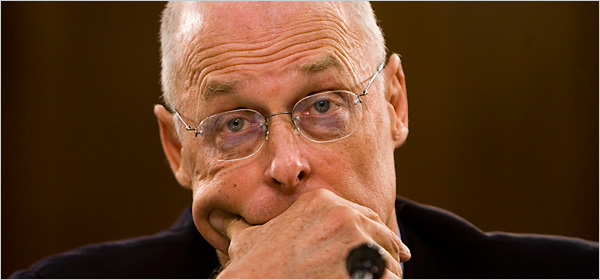
Did you know that there are thousands upon thousands of homeless people that are living underground beneath the streets of major U.S. cities? It is happening in Las Vegas, it is happening in New York City and it is even happening in Kansas City. As the economy crumbles, poverty in the United States is absolutely exploding and so is homelessness. In addition to the thousands of “tunnel people” living under the streets of America, there are also thousands that are living in tent cities, there are tens of thousands that are living in their vehicles and there are more than a million public school children that do not have a home to go back to at night. The federal government tells us that the recession “is over” and that “things are getting better”, and yet poverty and homelessness in this country continue to rise with no end in sight. So what in the world are things going to look like when the next economic crisis hits?
and it is even happening in Kansas City. As the economy crumbles, poverty in the United States is absolutely exploding and so is homelessness. In addition to the thousands of “tunnel people” living under the streets of America, there are also thousands that are living in tent cities, there are tens of thousands that are living in their vehicles and there are more than a million public school children that do not have a home to go back to at night. The federal government tells us that the recession “is over” and that “things are getting better”, and yet poverty and homelessness in this country continue to rise with no end in sight. So what in the world are things going to look like when the next economic crisis hits?
When I heard that there were homeless people living in a network of underground tunnels beneath the streets of Kansas City, I was absolutely stunned. I have relatives that live in that area. I never thought of Kansas City as one of the more troubled cities in the United States.
But according to the Daily Mail, police recently discovered a huge network of tunnels under the city that people had been living in…
Below the streets of Kansas City, there are deep underground tunnels where a group of vagrant homeless people lived in camps.
These so-called homeless camps have now been uncovered by the Kansas City Police, who then evicted the residents because of the unsafe environment.
Authorities said these people were living in squalor, with piles of garbage and dirty diapers left around wooded areas.
The saddest part is the fact that authorities found dirty diapers in the areas near these tunnels. That must mean that babies were being raised in that kind of an environment.
Unfortunately, this kind of thing is happening all over the nation. In recent years, the tunnel people of Las Vegas have received quite a bit of publicity all over the world. It has been estimated that more than 1,000 people live in the massive network of flood tunnels under the city…
Deep beneath Vegas’s glittering lights lies a sinister labyrinth inhabited by poisonous spiders and a man nicknamed The Troll who wields an iron bar.
But astonishingly, the 200 miles of flood tunnels are also home to 1,000 people who eke out a living in the strip’s dark underbelly.
Some, like Steven and his girlfriend Kathryn, have furnished their home with considerable care – their 400sq ft ‘bungalow’ boasts a double bed, a wardrobe and even a bookshelf.
Could you imagine living like that? Sadly, for an increasing number of Americans a “normal lifestyle” is no longer an option. Either they have to go to the homeless shelters or they have to try to eke out an existence on their own any way that they can.
In New York City, authorities are constantly trying to root out the people that live in the tunnels under the city and yet they never seem to be able to find them all. The following is from a New York Post article about the “Mole People” that live underneath New York City…
The homeless people who live down here are called Mole People. They do not, as many believe, exist in a separate, organized underground society. It’s more of a solitary existence and loose-knit community of secretive, hard-luck individuals.
The New York Post followed one homeless man known as “John Travolta” on a tour through the underground world. What they discovered was a world that is very much different from what most New Yorkers experience…
In the tunnels, their world is one of malt liquor, tight spaces, schizophrenic neighbors, hunger and spells of heat and cold. Travolta and the others eat fairly well, living on a regimented schedule of restaurant leftovers, dumped each night at different times around the neighborhood above his foreboding home.
Even as the Dow hits record high after record high, poverty in New York City continues to rise at a very frightening pace. Incredibly, the number of homeless people sleeping in the homeless shelters of New York City has increased by a whopping 19 percent over the past year.
In many of our major cities, the homeless shelters are already at maximum capacity and are absolutely packed night after night. Large numbers of homeless people are often left to fend for themselves.
That is one reason why we have seen the rise of so many tent cities.
Yes, the tent cities are still there, they just aren’t getting as much attention these days because they do not fit in with the “economic recovery” narrative that the mainstream media is currently pushing.
In fact, many of the tent cities are larger than ever. For example, you can check out a Reuters video about a growing tent city in New Jersey that was posted on YouTube at the end of March right here. A lot of these tent cities have now become permanent fixtures, and unfortunately they will probably become much larger when the next major economic crisis strikes.
But perhaps the saddest part of all of this is the massive number of children that are suffering night after night.
For the first time ever, more than a million public school children in the United States are homeless. That number has risen by 57 percentsince the 2006-2007 school year.
So if things are really “getting better”, then why in the world do we have more than a million public school children without homes?
These days a lot of families that have lost their homes have ended up living in their vehicles. The following is an excerpt from a 60 Minutes interview with one family that is living in their truck…
This is the home of the Metzger family. Arielle,15. Her brother Austin, 13. Their mother died when they were very young. Their dad, Tom, is a carpenter. And, he’s been looking for work ever since Florida’s construction industry collapsed. When foreclosure took their house, he bought the truck on Craigslist with his last thousand dollars. Tom’s a little camera shy – thought we ought to talk to the kids – and it didn’t take long to see why.
Pelley: How long have you been living in this truck?
Arielle Metzger: About five months.
Pelley: What’s that like?
Arielle Metzger: It’s an adventure.
Austin Metzger: That’s how we see it.
Pelley: When kids at school ask you where you live, what do you tell ‘em?
Austin Metzger: When they see the truck they ask me if I live in it, and when I hesitate they kinda realize. And they say they won’t tell anybody.
Arielle Metzger: Yeah it’s not really that much an embarrassment. I mean, it’s only life. You do what you need to do, right?
But after watching a news report or reading something on the Internet about these people we rapidly forget about them because they are not a part of “our world”.
Another place where a lot of poor people end up is in prison. In a previous article, I detailed how the prison population in the United States has been booming in recent years. If you can believe it, the United States now has approximately 25 percent of the entire global prison population even though it only has about 5 percent of the total global population.
And these days it is not just violent criminals that get thrown into prison. If you lose your job and get behind on your bills, you could be thrown into prison as well. The following is from a recent CBS News article…
Roughly a third of U.S. states today jail people for not paying off their debts, from court-related fines and fees to credit card and car loans, according to the American Civil Liberties Union. Such practices contravene a 1983 United States Supreme Court ruling that they violate the Constitutions’s Equal Protection Clause.
Some states apply “poverty penalties,” such as late fees, payment plan fees and interest, when people are unable to pay all their debts at once. Alabama charges a 30 percent collection fee, for instance, while Florida allows private debt collectors to add a 40 percent surcharge on the original debt. Some Florida counties also use so-called collection courts, where debtors can be jailed but have no right to a public defender. In North Carolina, people are charged for using a public defender, so poor defendants who can’t afford such costs may be forced to forgo legal counsel.
The high rates of unemployment and government fiscal shortfalls that followed the housing crash have increased the use of debtors’ prisons, as states look for ways to replenish their coffers. Said Chettiar, “It’s like drawing blood from a stone. States are trying to increase their revenue on the backs of the poor.”
If you are poor, the United States can be an incredibly cold and cruel place. Mercy and compassion are in very short supply.
The middle class continues to shrink and poverty continues to grow with each passing year. According to the U.S. Census Bureau, approximately one out of every six Americans is now living in poverty. And if you throw in those that are considered to be “near poverty”, that number becomes much larger. According to the U.S. Census Bureau, more than 146 million Americans are either “poor” or “low income”.
For many more facts about the rapid increase of poverty in this country, please see my previous article entitled “21 Statistics About The Explosive Growth Of Poverty In America That Everyone Should Know“.
But even as poverty grows, it seems like the hearts of those that still do have money are getting colder. Just check out what happened recently at a grocery store that was in the process of closing down in Augusta, Georgia…
Residents filled the parking lot with bags and baskets hoping to get some of the baby food, canned goods, noodles and other non-perishables. But a local church never came to pick up the food, as the storeowner prior to the eviction said they had arranged. By the time the people showed up for the food, what was left inside the premises—as with any eviction—came into the ownership of the property holder, SunTrust Bank.
The bank ordered the food to be loaded into dumpsters and hauled to a landfill instead of distributed. The people that gathered had to be restrained by police as they saw perfectly good food destroyed. Local Sheriff Richard Roundtree told the news “a potential for a riot was extremely high.”
Can you imagine watching that happen?
But of course handouts and charity are only temporary solutions. What the poor in this country really need are jobs, and unfortunately there has not been a jobs recovery in the United States since the recession ended.
In fact, the employment crisis looks like it is starting to take another turn for the worse. The number of layoffs in the month of March was 30 percent higher than the same time a year ago.
Meanwhile, small businesses are indicating that hiring is about to slow down significantly. According to a recent survey by the National Federation of Independent Businesses, small businesses in the United States are extremely pessimistic right now. The following is what Goldman Sachs had to say about this survey…
Components of the survey were consistent with the decline in headline optimism, as the net percent of respondents planning to hire fell to 0% (from +4%), those expecting higher sales fell to -4% (from +1%), and those reporting that it is a good time to expand ticked down to +4% (from +5%). The net percent of respondents expecting the economy to improve was unchanged at -28%, a very depressed level. However, on the positive side, +25% of respondents plan increased capital spending [ZH: With Alcoa CapEx spending at a 2 year low]. Small business owners continue to place poor sales, taxes, and red tape at the top of their list of business problems, as they have for the past several years.
So why aren’t our politicians doing anything to fix this?
For example, why in the world don’t they stop millions of our jobs from being sent out of the country?
Well, the truth is that they don’t think we have a problem. In fact, U.S. Senator Ron Johnson recently said that U.S. trade deficits “don’t matter”.
He apparently does not seem alarmed that more than 56,000 manufacturing facilities have been shut down in the United States since 2001.
And since the last election, the White House has seemed to have gone into permanent party mode.
On Tuesday, another extravagant party will be held at the White House. It is being called “In Performance at the White House: Memphis Soul”, and it is going to include some of the biggest names in the music industry…
As the White House has previously announced, Justin Timberlake (who will be making his White House debut), Al Green, Ben Harper, Queen Latifah, Cyndi Lauper, Joshua Ledet, Sam Moore, Charlie Musselwhite, Mavis Staples, and others will be performing at the exclusive event.
And so who will be paying for all of this?
You and I will be. Even as the Obamas cry about all of the other “spending cuts” that are happening, they continue to blow millions of taxpayer dollars on wildly extravagant parties and vacations.
Overall, U.S. taxpayers will spend well over a billion dollars on the Obamas this year.
I wonder what the tunnel people that live under the streets of America think about that.
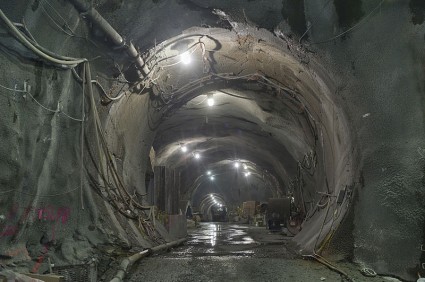
Read more at http://investmentwatchblog.com/the-tunnel-people-that-live-under-the-streets-of-america/#y0LM9Kvua2B11raq.99

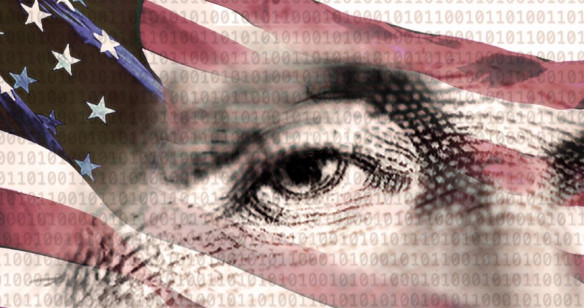








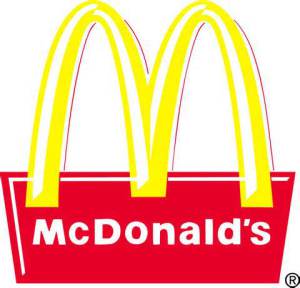


 America needs a new war? For the economy to survive? Job market to revive? Capitalism thrive? Maybe. Here’s why:
America needs a new war? For the economy to survive? Job market to revive? Capitalism thrive? Maybe. Here’s why:
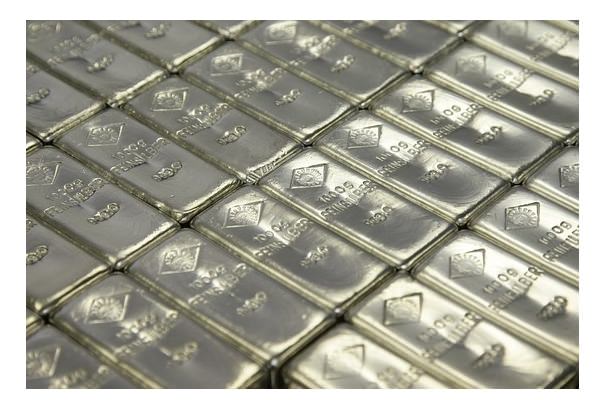


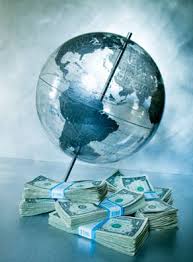 The world will soon be facing a tsunami of defaults on bad debts. This will include municipal or local government defaults such as the one now occurring in Stockton California, governments “defaulting” on promises they’ve made to the people (Social Security, Medicaid), a default on the social contract between society and politicians such as the one in Cyprus (a default on the notions of private property and Democracy), stealth defaults on debts in the form of inflation and finally, of course, outright sovereign defaults.
The world will soon be facing a tsunami of defaults on bad debts. This will include municipal or local government defaults such as the one now occurring in Stockton California, governments “defaulting” on promises they’ve made to the people (Social Security, Medicaid), a default on the social contract between society and politicians such as the one in Cyprus (a default on the notions of private property and Democracy), stealth defaults on debts in the form of inflation and finally, of course, outright sovereign defaults.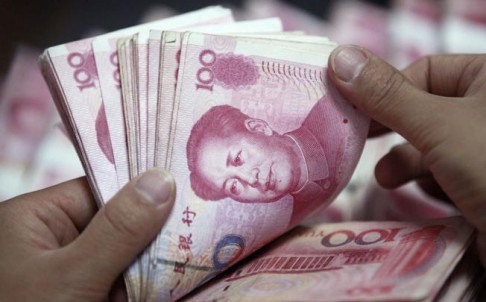

 Most homeowners wronged during the foreclosure fiasco will receive only a few hundred dollars in compensation from a settlement reached between the federal government and banks.
Most homeowners wronged during the foreclosure fiasco will receive only a few hundred dollars in compensation from a settlement reached between the federal government and banks.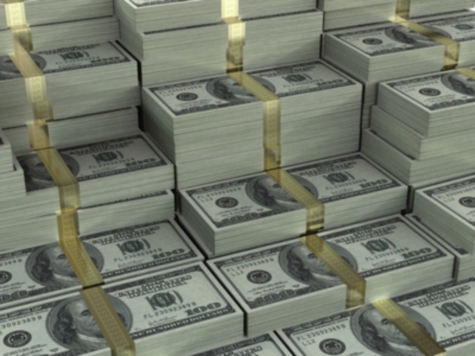
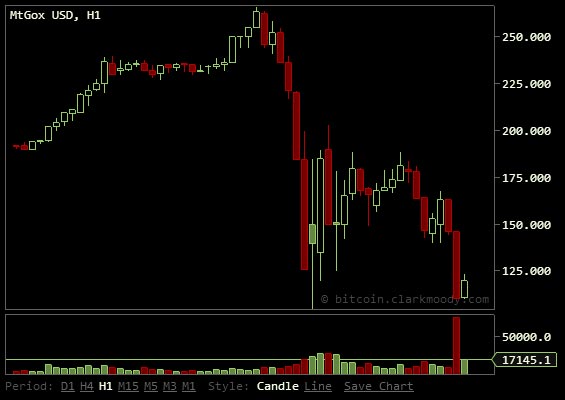
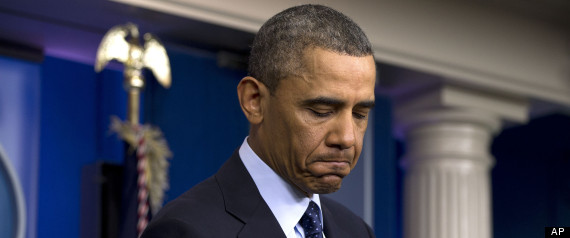
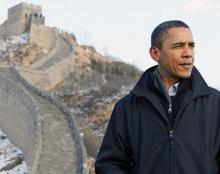
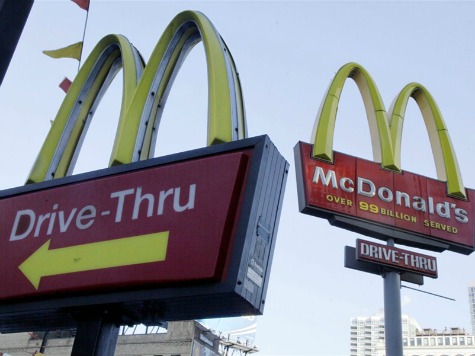
 Just a few months ago the total net worth of all Bitcoins, a popular encrypted digital currency, was worth about $140 million. The non-tangible exchange mechanism is used by people all over the world to purchase everything from traditional goods and services, to illicit trade that may include drugs and stolen credit card numbers. The coins became a go-to digital store of wealth around the world after the meltdown of the Cypriot financial system, and was pushed as a ‘safe’ way to preserve wealth out of view prying government eyes. All of the excitement surrounding Bitcoin has driven the price of a single unit to in excess of $250, giving the total Bitcoins in global circulation a
Just a few months ago the total net worth of all Bitcoins, a popular encrypted digital currency, was worth about $140 million. The non-tangible exchange mechanism is used by people all over the world to purchase everything from traditional goods and services, to illicit trade that may include drugs and stolen credit card numbers. The coins became a go-to digital store of wealth around the world after the meltdown of the Cypriot financial system, and was pushed as a ‘safe’ way to preserve wealth out of view prying government eyes. All of the excitement surrounding Bitcoin has driven the price of a single unit to in excess of $250, giving the total Bitcoins in global circulation a  (Chart Courtesy
(Chart Courtesy 
 New money: More than a dozen states have pushed laws through so that gold and silver can be used as legal tender
New money: More than a dozen states have pushed laws through so that gold and silver can be used as legal tender
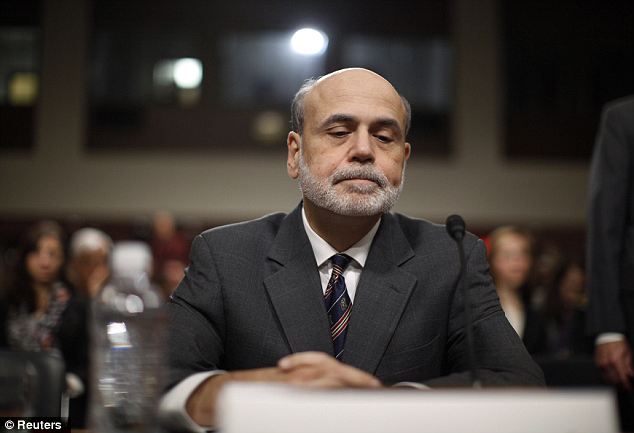 Loss of faith: Conservative politicians are concerned about the economic policies put into place by Ben Bernanke during his time as the chairman of the federal reserve
Loss of faith: Conservative politicians are concerned about the economic policies put into place by Ben Bernanke during his time as the chairman of the federal reserve
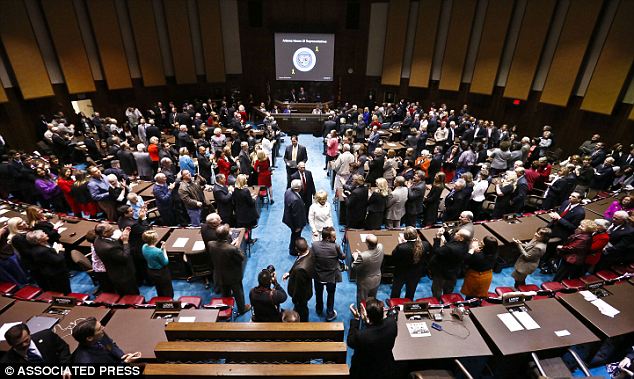 Angry Arizonans: The Arizona House of Representatives passed the law through and now it continues through the process before it goes ahead an is enacted in the state
Angry Arizonans: The Arizona House of Representatives passed the law through and now it continues through the process before it goes ahead an is enacted in the state




